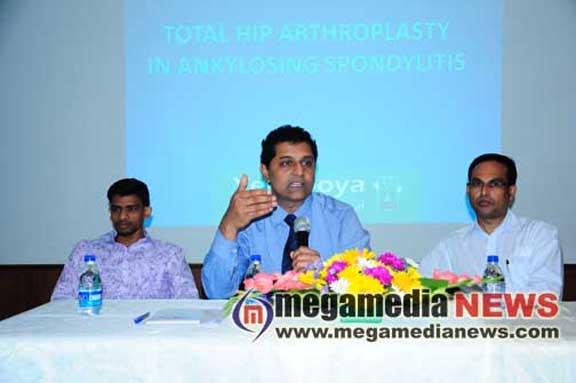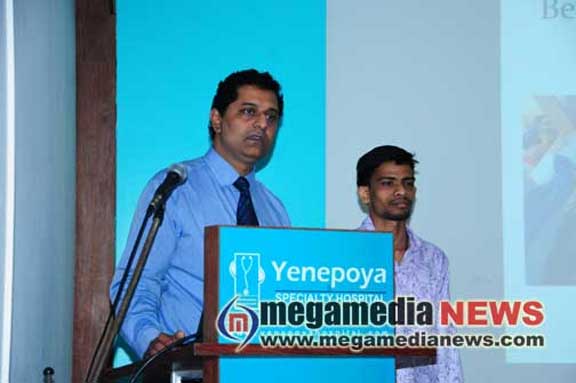After eight crippling years, 28-year-old bids adieu to physical disability
9:45 AM, Thursday, February 8th, 2018 Mangalore: ‘There’s light at the end of the tunnel’… the phrase exudes hope and optimism but can be tough to practice when all odds seem to be pitted against you.
Mangalore: ‘There’s light at the end of the tunnel’… the phrase exudes hope and optimism but can be tough to practice when all odds seem to be pitted against you.
But hope and faith, against all challenges,is what can make the most unviable, possible. 28-year-old Jayanthais a perfect example of optimism through the thick and thin of his life. It was his perseverance that helped Jayantha get back on his feet after 12 years of grueling battle with Ankylosing Spondylitis.
Ankylosing Spondylitis, over the years progressed to become severe, causing irreversible damage to Jayantha’sspine and pelvic joints. Due to AS, his spinal column and hip joints failed completely leading to complete loss of movement.
Consequently, Jayantha could barely move around and was bedridden for past eight years.
Explaining in detail about disease and patient’s condition, Dr. Deepak Rai, chief orthopedic surgeon at Yenepoya Specialty Hospital, states, “Ankylosing Spondylitis (AS) is a rare kind of arthritisfound in 0.1 to 0.5% of the population. AS is predominantly a genetic condition that is most common in younger men, and is most likely to occur in the late teens and twenties.
It is also found among patients with HLAB27 antigen in the blood.”
Further elaborating on the condition, he says, “Onset of AS is usually gradual often accompanied with severe pain in lower back, buttock, hip and thigh on one or both sides. The condition grows progressively to worsen with the time.
 Unlike a healthy spine, that is able to move in many directions and allows one to bend, turn, and twist, ligaments of AS affected spine calcify. Spinal bones, as a result of calcification, can fuse together making it impossible for patient to move spine in any direction. Precisely due to this AS can be disabling in its advanced stages.”
Unlike a healthy spine, that is able to move in many directions and allows one to bend, turn, and twist, ligaments of AS affected spine calcify. Spinal bones, as a result of calcification, can fuse together making it impossible for patient to move spine in any direction. Precisely due to this AS can be disabling in its advanced stages.”
AS can be diagnosed through physical examination, x-ray of the back and pelvis and lab tests.
Talking about Jayantha’s case, Dr. Rai explains, “When the patient under consideration was presented to me, both his hip joints were fused with complete loss of movement.
He was suffering intolerable pain in both hips and was leading a very poor quality life. He was completely dependent on family and caretakers to perform even the day to day activities.
There was no option but to undergo replacement surgery of both the hips to help him regain his mobility and functional abilities. Helping him get rid of the excruciating pain was the primary objective of surgery.”
In Jayantha what aggravated the condition was not just the disease itself, but the refusal to undergo surgical intervention in the nascent stages of the ailment as advised by his medical practitioner.
“The patient was reluctant to take any form of allopathic treatment, which could have altered the course of the disease. The repeated inflammation of the joints due to ankylosing spondylitis directly contributed to the failure of his hip and spinal column,” the surgeon points out.
A joint replacement surgery is the last resort for people with advanced joint disease which has maimed their quality of life for a long period of time. And with technology changing the face of medicine, joint replacement surgery has advanced to an effective and safer.
Simillar Posts
Warning: count(): Parameter must be an array or an object that implements Countable in /home/megamcaq/public_html/wp-content/plugins/post-plugin-library/common_functions.php on line 357
- None Found
Leave a Reply
© Copyright 2008 www.megamedianews.com All Rights Reserved. Privacy Policy








 Posted in
Posted in  Tags:
Tags: 






